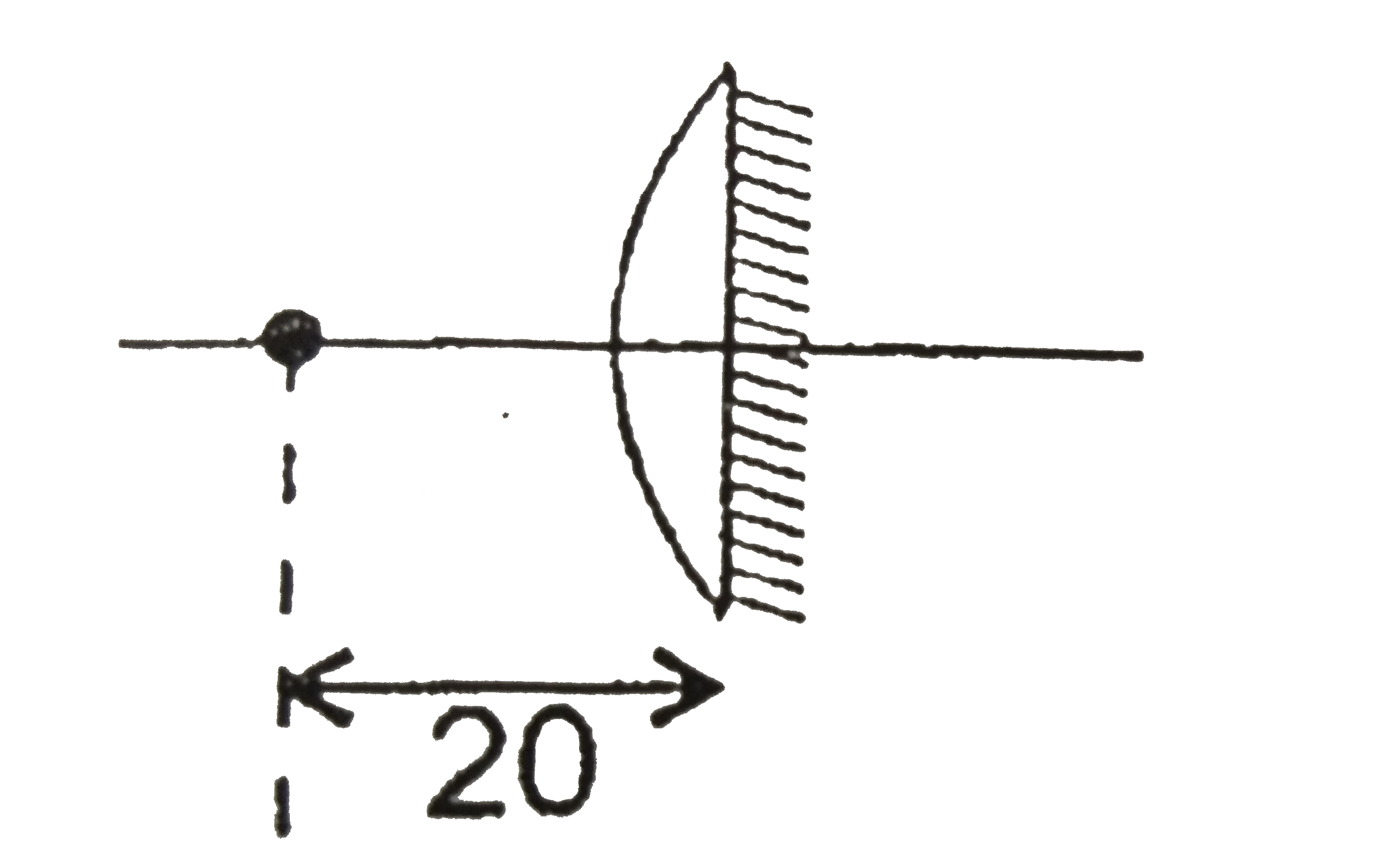An object is placed at a distance of 20cm from a equi-concave lens of focal length 30cm, whose one surface is silvered. If the radius of curvature of the silvered surface is 60cm, find the position and nature of the image.
To solve the problem step by step, we will follow these instructions:
Step 1: Understand the System
We have an equi-concave lens with a focal length of f=−30cm (negative because it is a concave lens). One surface of the lens is silvered, effectively turning it into a mirror. The radius of curvature of the silvered surface is R=−60cm (negative for concave mirrors).
Step 2: Calculate the Effective Focal Length
When one surface of the lens is silvered, we need to find the effective focal length of the combination (lens + mirror). The formula for the effective focal length F when one surface is silvered is given by:
1F=1f+1fm
Where:
- f is the focal length of the lens,
- fm is the focal length of the mirror.
The focal length of the mirror can be calculated using the radius of curvature:
fm=R2=−602=−30cm
Now substituting the values into the effective focal length formula:
1F=1−30+1−30=−230=−115
Thus,
F=−15cm
Step 3: Determine Object Distance
The object is placed at a distance of u=−20cm (negative as per the sign convention).
Step 4: Use the Mirror Formula to Find Image Distance
The mirror formula is given by:
1f=1v+1u
Substituting the known values:
1−15=1v+1−20
Rearranging gives:
1v=1−15+120
Finding a common denominator (60):
1v=−460+360=−160
Thus,
v=−60cm
Step 5: Determine the Nature of the Image
Since v is negative, it indicates that the image is virtual.
Step 6: Calculate Magnification
Magnification m is given by:
m=−vu
Substituting the values:
m=−−60−20=3
Since the magnification is positive, the image is erect.
Final Answer
The image is located at 60cm on the same side as the object (virtual), and it is erect and magnified by a factor of 3.
---
We have an equi-concave lens with a focal length of f=−30cm (negative because it is a concave lens). One surface of the lens is silvered, effectively turning it into a mirror. The radius of curvature of the silvered surface is R=−60cm (negative for concave mirrors).
When one surface of the lens is silvered, we need to find the effective focal length of the combination (lens + mirror). The formula for the effective focal length F when one surface is silvered is given by:
- f is the focal length of the lens,
- fm is the focal length of the mirror.
The object is placed at a distance of u=−20cm (negative as per the sign convention).
The mirror formula is given by:
Since v is negative, it indicates that the image is virtual.
Magnification m is given by:
The image is located at 60cm on the same side as the object (virtual), and it is erect and magnified by a factor of 3.
Similar Questions
An object is placed at a distance of 12 cm from a convex lens of focal length 8 cm. Find :
nature of the image
View SolutionAn object is placed at a distance of 12 cm from a convex lens of focal length 8 cm. Find :
the position of the image
View SolutionAn object is placed at a distance of 20 cm from a concave mirror of focal lenght 10 cm. What is the image distance?
View SolutionA point object is placed at a distance of 20cm from a thin plano-convex lens of focal length 15cm(μ=1.5). The curved surface is silvered. The image will form at

View SolutionA point object is placed at a distance of 20cm from a thin plano-convex lens of focal length 15cm(μ=1.5). The curved surface is silvered. The image will form at

View SolutionA point object is placed at a distance of 20cm from a thin plano-concex lens of focal length 15cm. The plane surface of the lens is now silvered. The image created by the is at :

View SolutionThe convex surface of a plano-convex lens is silvered and the radius of curvature of this surface is R. Find the focal length of the system:
View SolutionAn object is placed at 6 cm distance in front of a concave mirror of focal length 4 cm.
Find the position of the image period.
View SolutionAn object 4cm in size is placed at a distance of 25.0cm from a concave mirror of focal length 15.0 cm. Find the position, nature and height of the image.
View SolutionAn object is at 20 cm from a concave mirror of focal length 10 cm, the nature of image is
View Solution
